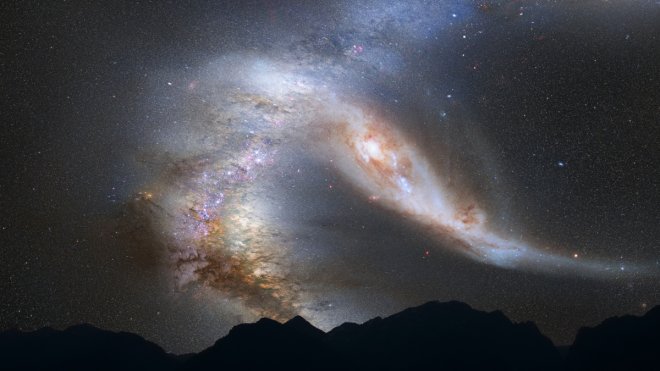
Two separate studies undertaken by researchers have identified that Baryon particles constituted more than half of the total mass of the visible universe.
The newly found Baryon particles which contained protons, neutrons and electrons are present in highly ionized gas clouds that link galaxies. X-ray telescopes couldn't detect the particles as they were not hot enough for them to observe. Ultraviolet observatories like the Hubble space telescope helped the astronomers to spot the warm-hot intergalactic matter (WHIM) which was present in the form of ionized gas clouds.
Researchers from the Institute of Space Astrophysics in Orsay, France and the University of Edinburg, UK, used the phenomenon of Sunyaev-Zel'dovich (SZ) effect to detect baryons. During the phenomenon, photons (light particles) which were created during the big bang explosion hit the electrons in the WHIM clouds to charge their electrons.
The SZ effect is extremely weak as the wavelength of the photons was only about one-tenth of a million than the normal. The scientists studied 1 million pairs of galaxies which were found during the Sloan Digital Survey. The galaxies were almost at the same distance from each other and the researchers could analyze the SZ effect in the WHIM from the images.
Sparks caused by the collision was observed by the Planks satellite in 2015. It created a Plank's map of the Universe based on the cosmic microwave background, the electromagnetic radiation caused by the collisions in the universe.
According to a New Scientist report, the Institute of Space Astrophysics made a database of 260,000 pairs of galaxies while the University of Edinburgh collected data from over a million pairs of galaxies. These observations could prove the presence of charged matter which was unidentified in the universe till now.
Meanwhile, the majority portion of the universe has not yet been identified and is recognized as dark energy and dark matter. Dark energy constitutes about 70 percent of the total content of the universe while the dark matter accounts for 23 percent. Baryon constituted 50-70 percent of the visible universe. Only 4.6 percent of the universe is visible to the humans, 10 percent of which constitutes stars and galaxies. The rest of the visible universe still remains unknown.









